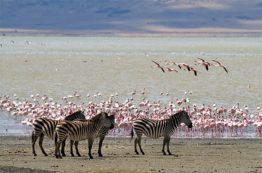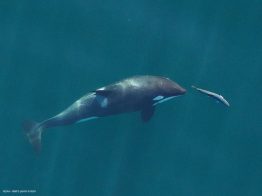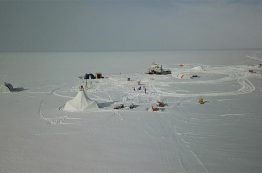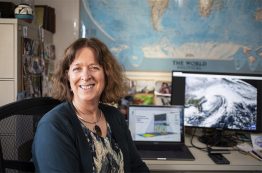Life as we know it requires phosphorus. It’s one of the six main chemical elements of life, it forms the backbone of DNA and RNA molecules, acts as the main currency for energy in all cells and anchors the lipids that separate cells from their surrounding environment. But how did a lifeless environment on the early Earth supply this key ingredient?
Read more at UW News »Resident orcas’ appetite likely reason for decline of big Chinook salmon
Killer whales prefer to eat only the biggest, juiciest Chinook salmon they can find. The larger the fish, the more energy a whale can get for its meal. Each year these top ocean predators consume more than 2.5 million adult Chinook salmon along the West Coast. Except for the endangered southern resident population in Washington, all other fish-eating orca populations that live along the coast, called “residents,” are growing in number.
Read more at UW News »Barrels of ancient Antarctic air aim to track history of rare gas
Ancient air samples from one of Antarctica’s snowiest ice core sites may add a new molecule to the record of changes to Earth’s atmosphere over the past century and a half, since the Industrial Revolution began burning fossil fuels on a massive scale. While carbon dioxide and methane are well known, researchers at the University of Washington and the University of Rochester are part of a team working to trace a much rarer gas, present at less than one in a trillion molecules.
Read more at UW News »Take a peak: 10 facts about the tallest mountain on Earth
When thinking of the “biggest” mountains on Earth, many people immediately think of Mount Everest or Denali, but some of the biggest mountains actually start below sea level and grow into islands. At over 33,000 feet, Mauna Kea in Hawaii reigns supreme as the biggest mountain on Earth as measured from base to top. Let’s explore the ways in which these mountains are different, both in how they are made and their geologic setting.
Read more »UW scientist to lead NASA field study of East Coast snowstorms
Snowstorms can wreak havoc across the United States, but especially on the East Coast. Snow is the least-understood form of precipitation, with major snowstorms among the most difficult weather events to forecast. Yet people rely on these forecasts to stay safe, plan travel routes and decide whether to close schools or businesses. To better understand large, disruptive snowstorms, a University of Washington atmospheric scientist will lead a NASA field campaign this winter to fly through major snowstorms along the East Coast.
Read more at UW News »





